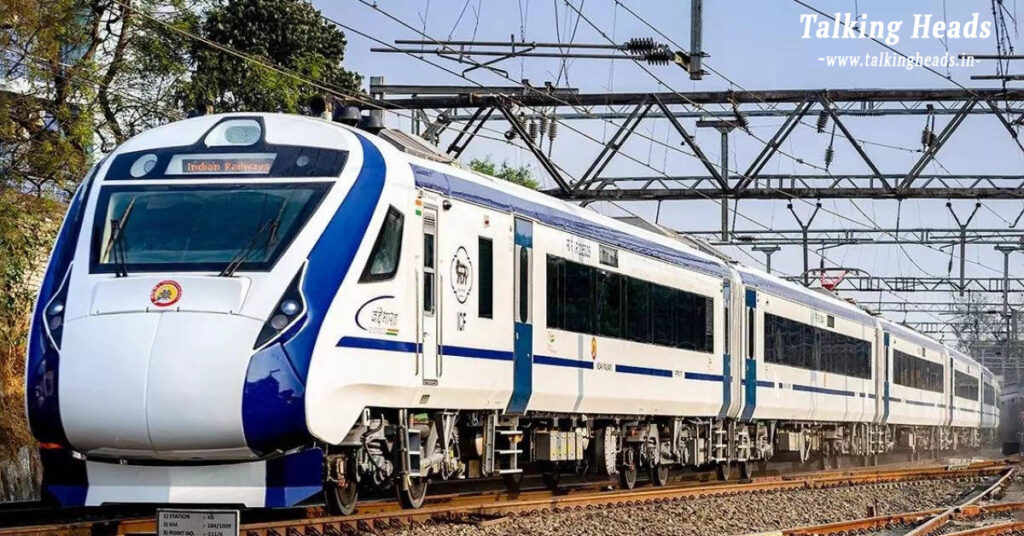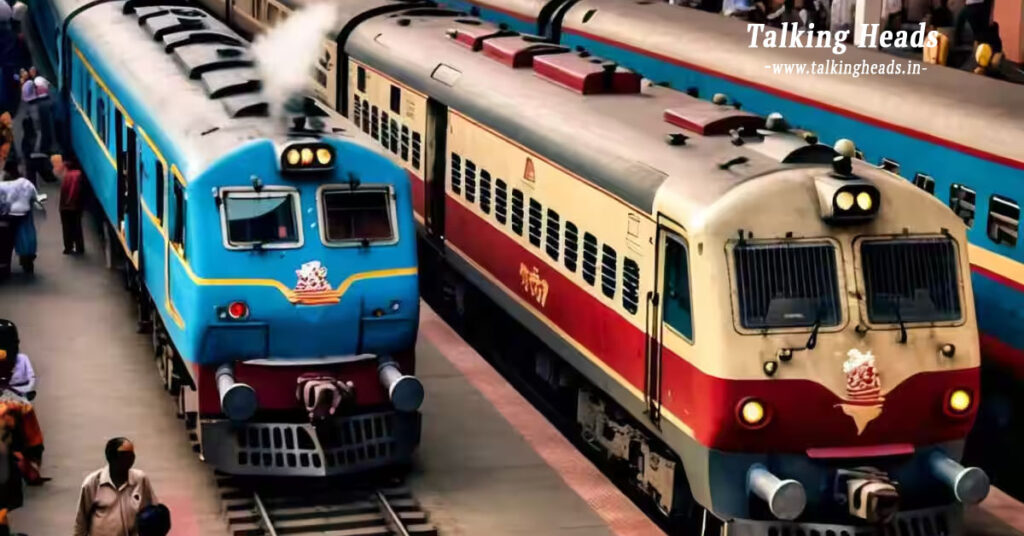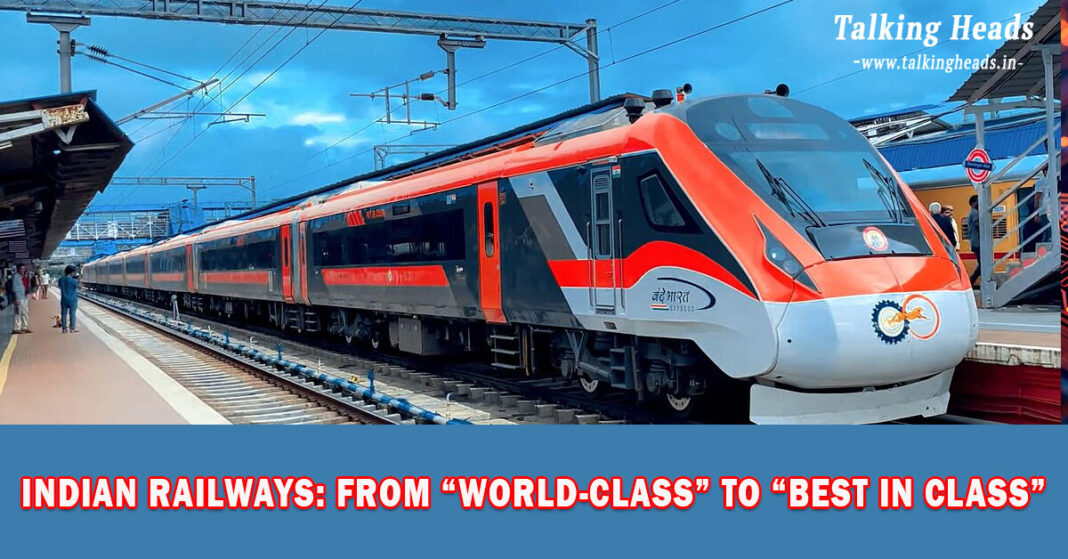Author: M. Jamshed, Former Member of Railway Board, Traffic and Distinguished Fellow at CRF)

Indian Railways, once known as the crouching tiger of India’s development, has now evolved from being “world-class” to “best in class.” Over the past decade (2014-2024), Indian Railways has made unprecedented progress, positioning itself as one of the fastest-growing railway networks in the world. This progress has become a key part of India’s broader development story, showcasing how strategic public policy investments in infrastructure and connectivity can yield remarkable dividends for national growth.
A Public Policy Approach Tailored for India
What makes India’s railway story stand out and why is it a lesson for other developing nations and regions with similar ambitions? The answer lies in a public policy approach that can be best summarized by saying that the railway planning was made with India and for India.
This approach focused on ensuring that the railway system remains world-class and affordable for the common man while supporting the economic efforts of India’s 1.4 billion people, 22.4 million of whom rely on the service for their daily livelihoods. It also aimed to develop a system that could parallel the aspirations of India’s industries, commerce, and its goal of becoming a $5 trillion economy.
Revolutionary Change in Railway Business Model
For this transformation, a revolutionary change in the way of doing business was essential. In the past, Indian Railways was often criticized for slow growth, underdeveloped modernization, and infrastructure saturation. Critics frequently referred to the network’s expansion as stagnant, citing that after 1950, the network grew only incrementally to 68,000 km. However, they overlooked crucial improvements in track capacity that have expanded the network to over 132,000 km today.

Impressive Growth and Expansion (2014-2024)
Comparing the performance of Indian Railways between 2004-2014 and 2014-2024, the difference is striking. During the last decade, Indian Railways established over 31,000 kilometers of new track, a sharp rise compared to 14,900 kilometers in the previous decade. Freight tonnage grew from 8,473 million tons to 12,660 million tons, while revenue soared from ₹8.64 lakh crore to ₹18.56 lakh crore. Electrification resulted in a significant reduction in the carbon footprint, growing from 5,188 km to over 44,000 km. A dedicated freight corridor, extending 2,741 km, and increased production of locomotives (from 4,695 to 9,168) and coaches (from 32,000 to 54,000) set new productivity benchmarks for the system.
Key Administrative Reforms and Financial Investments
Key administrative reforms, such as the merging of the railway budget with the national budget, helped eliminate outdated mindsets and bring about greater financial integration. Despite facing resource challenges and project delays in earlier years, Indian Railways saw a major investment surge, with ₹8.25 lakh crore allocated for infrastructure in the past decade, up from ₹1.56 lakh crore in the previous one.
Major Milestones: Srinagar Train, 100% Electrification, and Sustainability
Looking ahead, Indian Railways is on the brink of launching its first train to Srinagar, completing the construction of tracks that traverse some of the highest bridges and longest tunnels in the country. Moreover, it will soon be the first major railway network globally to achieve 100% electrification, significantly reducing fossil fuel dependence and cutting down carbon emissions.
Advanced Safety Features and Cutting-Edge Technology
Indian Railways’ safety protocols, such as the use of collision-proof systems, are among the most advanced in the world. The country has also embraced cutting-edge technologies, blending global advancements with local needs to create safer, faster, and more comfortable trains. This reflects India’s ambition to ensure that Indian Railways remains accessible to all.
Unique Business Model and Financial Sustainability
Indian Railways’ unique business model allows it to bear the costs of passenger services through freight revenue, making it financially sustainable. Unlike major railway systems in developed countries that rely on privatization or government subsidies, Indian Railways efficiently handles operational costs and receives gross budgetary support for its capital expenditures.
A Transformation for a New Generation
For many people, especially those who grew up in the 1990s, the transformation of Indian Railways is nothing short of astounding. In the past, “export-quality” products were often considered a premium, with the best products reserved for wealthy countries. However, since 2014, the Indian government’s focus on development and infrastructure has shifted this narrative. Modern India deserves a national transporter free from outdated and inward-looking approaches, one that is innovative and progressive.
Boosting Localization and Manufacturing
This growth has been achieved through high levels of localization and expanding manufacturing capabilities. While the Vande Bharat trains and their variants have garnered significant attention, there are several other areas within Indian Railways that have seen substantial advancements.
Hydrogen Trains: India Leading the Charge

India is now preparing to launch the world’s most powerful hydrogen trains. These 1,200-horsepower engines are poised to place India ahead of even developed nations, which are still grappling with the development of powerful hydrogen trains. Third-party audits of these trains by Germany’s TUV-SUD further ensure maximum safety.
Hyperloop: India’s Vision for Future Transport
India is also emerging as a global leader in future transport technologies, with the establishment of the world’s longest Hyperloop test facility. After successfully completing a 422-meter test track in December 2024, the country is preparing to build a 50-kilometer test track to evaluate the commercial viability of Hyperloop travel. With international collaborations, including deals with Swisspod and France’s SYSTRA, India is taking significant steps toward establishing a commercially viable Hyperloop system, strengthening its position as a technological powerhouse.
Strengthening Global Partnerships and Exports
Even China has adopted the ‘Make in India’ initiative, with CRRC India actively supporting localization efforts for the Bangalore Metro, ensuring that over 75% of the metro coaches are locally manufactured. CRRC’s goal is to increase localization to 90% in future projects, establishing India as a global hub for railway manufacturing.
India’s collaboration with Japan on bullet train rolling stock and its domestic production of high-speed trains further demonstrate the country’s strides in modernizing its railway network. Additionally, Austrian company Plasser & Theurer’s subsidiary, Plasser India, is transforming railway maintenance and construction with its locally manufactured track machines, bolstering self-reliance while supporting global exports.
Connecting India to the World
Indian Railways is also making significant strides in connecting South Asia through its BBIN initiative, while its ‘Act East Policy’ aims to link India with ASEAN countries, and the ‘IMEC initiative’ seeks to connect India to Europe through a rail-sea-rail corridor.
The Future: A World-Class Railway System
With new trains, modern stations, dedicated freight corridors, and a high-speed network, Indian Railways is now a world-class railway system. Its story is one that India can share with other nations that have yet to fully harness the transformative power of railways for national development. The mantra of a “developed railway, developed India” reflects the vision for the future – a future where progress, development, and innovation continue to shape India’s railway system.










